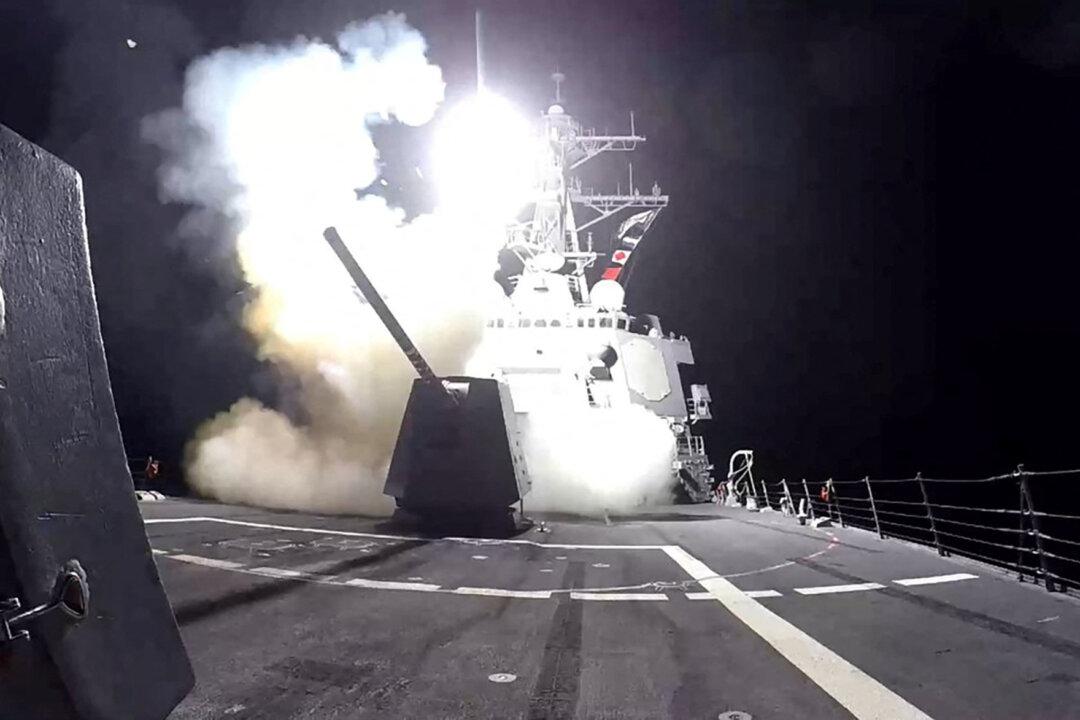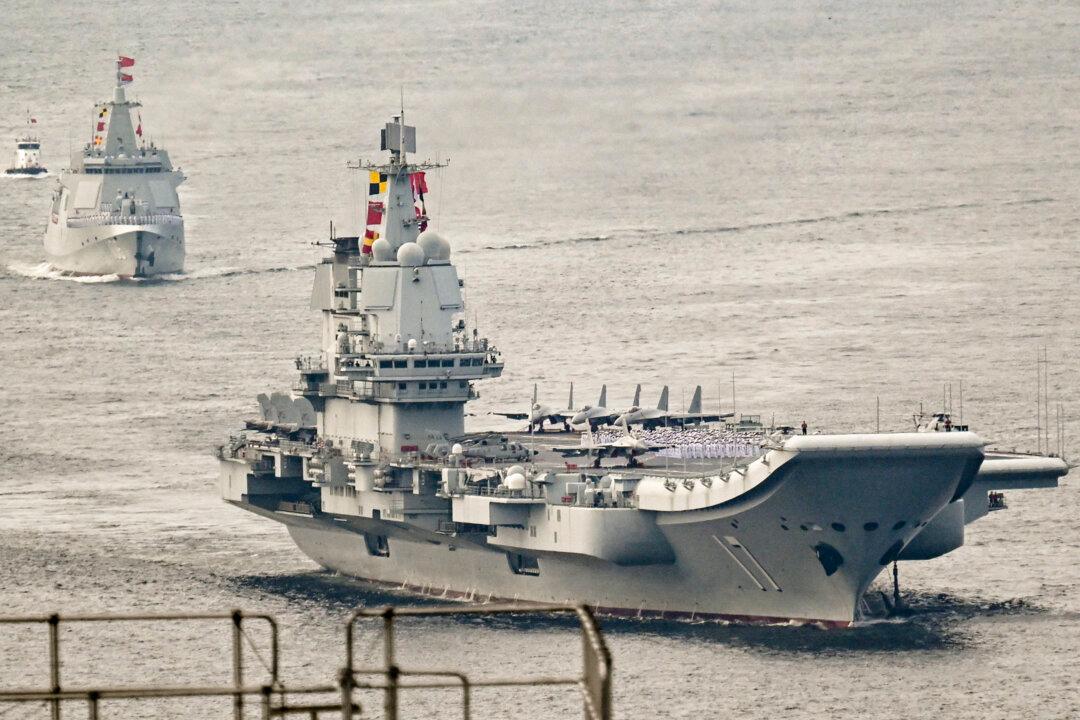Analysis of new satellite images suggests that the Chinese military is testing its ability to target ships in port with long-range ballistic missiles. The discovery may shed light on the Chinese Communist Party’s (CCP) efforts to develop a military capable of decapitating U.S. forces in the Indo-Pacific.

A satellite picture shows a carrier target in Ruoqiang, Xinjiang, China, on Oct. 20, 2021. Satellite Image ©2021 Maxar Technologies/Handout via Reuters
Andrew Thornebrooke
National Security Correspondent
|Updated:
Andrew Thornebrooke is a former national security correspondent for The Epoch Times covering China-related issues with a focus on defense, military affairs, and national security. He holds a master's in military history from Norwich University.
Author’s Selected Articles



